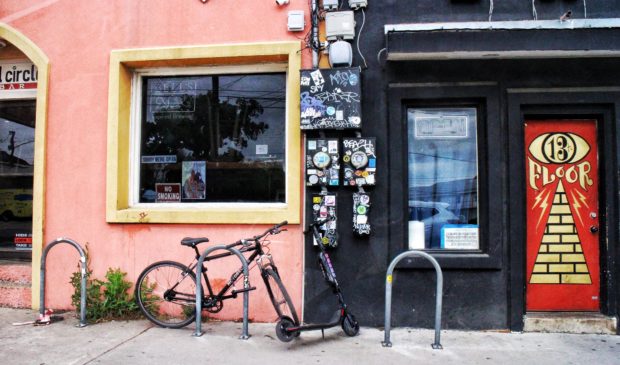Council approaches resolution on 12th Street conflict, but neighbors still dissatisfied
Monday, August 1, 2022 by
Kali Bramble The city came close to settling a monthslong dispute over East 12th Street last week, postponing updates to the Urban Renewal Plan and Neighborhood Conservation Combining District perhaps one last time.
With a valid zoning protest petition filed and Council Member Vanessa Fuentes off the dais, Council opted to table the ruling until Sept. 1. The less controversial update to 11th Street development standards still passed unanimously.
The conflict came to Council in April when Council Member Natasha Harper-Madison, who represents the district, proposed the addition of cocktail lounges to 12th Street’s list of conditionally permitted land uses. While Harper-Madison argues the move is geared toward economic and cultural revitalization, neighbors are concerned about interference with the area’s “family friendly” character.
“I don’t think we need another Sixth Street, Rainey Street or Red River here,” architect and general contractor Nicole Blair said.
“I appreciate the historical use of the area for entertainment,” Edward Winston said. “But the current use leans more toward family and single-family development.”
Neighbor Susan Oringer claimed there was widespread consensus among older residents, most of them people of color, in the surrounding neighborhood, but that they could not testify on account of disabilities and mobility issues. Michelle Hogan echoed this sentiment, reading a signed statement from a senior neighbor in Spanish.
“Please listen and honor those who I’ve spoken for who cannot be here today,” Oringer said.
The East Austin Urban Renewal Plan dates back to 1995, when former Council Member Eric Mitchell founded the Austin Revitalization Authority. Mitchell charged the organization with reanimating the once-vibrant center of African American culture through a combination of historic preservation efforts, housing investments, infrastructural improvements and responsible economic development.
The stretch of 11th and 12th streets just east of Interstate 35, now home to the only state-designated Black cultural arts district in Texas, has since undergone slow but steady transformation. Yet discrepancies between the Urban Renewal Plan and zoning policies outlined in the Neighborhood Conservation Combining Districts have continued to impede growth, particularly along East 12th Street where a handful of lots remain vacant.
Community leaders hope that the proposed amendments, which include changes to compatibility, floor area and height standards, will give them greater agency to collaborate with the city on revitalization efforts.
“I understand my neighbors’ frustrations about this conditional use thing, but a conditional use does not mean a bar on every lot,” East Austin Creative Coalition founder Harold McMillan said. “Let’s keep going on this … the pieces are in place. We’re not talking about a bunch of bars, we’re talking about cultural institutions that might be commercial businesses to help the city’s economy.”
“Artists need canvases and locations where they can be seen, musicians need audiences to hear and follow them, and this does include cocktail lounges,” Harlem Labs CEO Waziri Garuba said. “Our business owners, your entrepreneurial class, need affordability, launch support, and policies that support growth … rather than sweep away the options for creating economic prosperity, allow us as a community to manage the decision-making process on a case by case basis.”
As for the pushback from neighbors, some Council members wondered whether biases against Black entertainment spaces were at play.
“I’m very disappointed in this discussion. I have never seen this kind of discussion for any other parts of this town,” Council Member Pio Renteria said. “Eleventh Street was a Black entertainment center until the white people came in. And since then, it’s been all controversy. I’m very disappointed, it’s close to racism to me.”
To appease concerns, Harper-Madison proposed an amendment that would require cocktail lounges be located more than 200 feet apart. Rough calculations from staff estimated 20-22 theoretical establishments based on such rules, though this would require significant overhaul of existing businesses. Cocktail lounges under the new provisions would also be capped at 3,500 square feet.
“If the number 20 is relevant to you, please go drive down the block and take a look at it,” Harper-Madison urged. “What’s being said to the public about a bar on every block: it’s fear-mongering frankly and it’s just not even possible … I don’t like when people manipulate my constituents and neighbors and I think there are people actively engaged in doing so.”
Photo made available through a Creative Commons license.
The Austin Monitor’s work is made possible by donations from the community. Though our reporting covers donors from time to time, we are careful to keep business and editorial efforts separate while maintaining transparency. A complete list of donors is available here, and our code of ethics is explained here.
You're a community leader
And we’re honored you look to us for serious, in-depth news. You know a strong community needs local and dedicated watchdog reporting. We’re here for you and that won’t change. Now will you take the powerful next step and support our nonprofit news organization?





